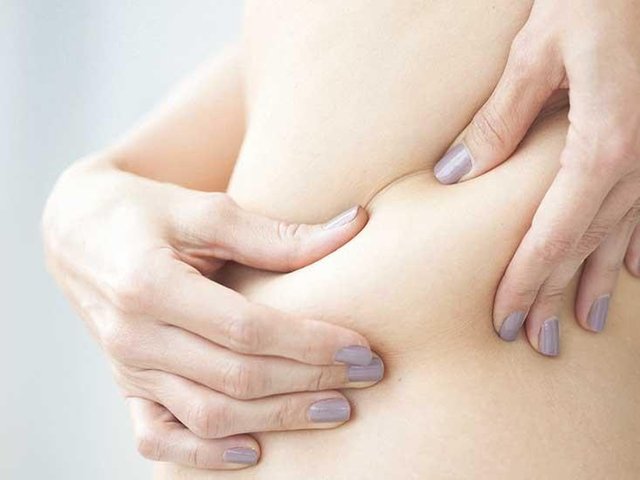Understanding SculpSure for Nonsurgical Fat Reduction 😉
What is SculpSure?
SculpSure is a laser-based, noninvasive treatment that’s used to target and reduce or eliminate fat. It works for both men and women and on a variety of body types. One procedure takes an average of 25 minutes and can target multiple areas at once.

Noninvasive, nonsurgical cosmetic body procedures are becoming increasingly popular, especially to help with fat reduction. Nonsurgical procedures require no incisions or anesthesia. This can mean there’s minimal discomfort, a quick procedure time, and little to no recovery time.
Keep reading to learn more about SculpSure.
ADVERTISEMENT
PURPOSE
Extra! Extra health updates!
Need a regular dose of health news? Sign up for daily updates.
SIGN UP
What does SculpSure do?
SculpSure involves a hands-free heat laser belt that uses specific wavelengths and heat to eliminate fat cells. In 2015, the U.S. Food and Drug Administration (FDA) cleared SculpSure for its use in noninvasive lipolysis in the following areas:
upper abdominal area
lower abdominal area
flanks
People who are best suited for SculpSure have a body mass index of 30 or less. SculpSure is not intended as a weight loss option. SculpSure is usually not the best treatment option for people with obesity.
COST
How much does SculpSure cost?
The cost of SculpSure varies based on the number of applicators used during treatment as well as where you live. Depending on the area you’re targeted on your body, you may need to use one to four applicators per procedure. According to the American Society for Aesthetic Plastic Surgery (ASAPS), the average cost of a nonsurgical fat reduction such as SculpSure was $1458 in 2016.
Some offices offer incentives and payment plans. SculpSure is a cosmetic procedure, so it’s usually not covered by insurance.
ADVERTISEMENT
PREPARATION
Preparing for SculpSure
When discussing the procedure with your licensed practitioner, you should communicate which areas of your body you’re interested in treating. The practitioner will tell you how many sessions you might need to reach your goals. Based on licensing rules in your state, the licensed practitioner may be a:
doctor
physician’s assistant
nurse practitioner
nurse
aesthetician
The first SculpSure consultation often takes place right before the treatment, but sometimes you will have to schedule a separate appointment.
Be prepared to discuss your medical history and what medications you’re currently on. To minimize the chance of bruising, you might be told to avoid blood thinners and painkillers such as Ibuprofen or aspirin a few days before you plan to have a SculpSure treatment done.
PROCEDURE
How does SculpSure work?
SculpSure is a type of lipolysis. Lipolysis is a fat-eliminating process. SculpSure uses laser technology to “melt” fat cells away.
At your appointment, you will be seated in a comfortable, reclined position. The licensed practitioner will mark the treatment areas on your body.
During treatment, the SculpSure device is wrapped around you like a belt. Its applicators deliver a 1060-nanometer diode laser that reaches a temperature of 107.6 and 116.6°F. This is hot enough to kill fat cells underneath the skin while leaving other tissues unharmed.
The SculpSure device alternates between delivering a cooling effect and the heat laser. Each treatment takes about 25 minutes. During the procedure, you can relax, read, or nap.
During the 12 weeks after the procedure, your body’s lymphatic system naturally flushes out the eliminated fat cells. If you need additional treatments to reach your desired results, they can be done 6-12 weeks or more after the first treatment.
ADVERTISEMENT
SCULPSURE VS. COOLSCULPTING
SculpSure vs. CoolSculpting
SculpSure and CoolSculpting have a similar basic purpose: to target and injure fat cells so they eventually die and are disposed of through your body’s lymphatic system. The difference is that while SculpSure uses controlled heat to eliminate fat cells, CoolSculpting uses the process of controlled cooling, also known as cryolipolysis.
The potential risks and side effects, as well as the pain level and downtime, are similar for both procedures. As of 2016, the average cost of CoolSculpting ranged between $2000 and $4000, whereas SculpSure averaged between $1400 and $1500.
CoolSculpting was cleared by the FDA in 2012, while SculpSure received clearance in 2015. Because CoolSculpting has been around for a few more years, there’s more available information on it, including more formal studies and clinical trials.
SIDE EFFECTS
SculpSure risks and side effects
The heating phases during treatment may cause some minor pinching or a tingling sensation, but no numbing agent or anesthesia is necessary.
Few serious side effects have been reported, but because SculpSure is a relatively new procedure, research is still ongoing regarding the effects on the body.
After treatment, you may experience some soreness and stiffness. You may also experience bruising in the treated areas. Your licensed practitioner may recommend that you massage the firm areas during the weeks after the procedure.
ADVERTISEMENT
RESULTS AND RECOVERY
SculpSure results and recovery
SculpSure takes 25 minutes and is noninvasive with little to no recovery time. This means that you could feasibly have a treatment done on your lunch break and return to regular work immediately.
As your body metabolizes the eliminated fat cells, fat reduction may be noticeable in as few as six weeks after one treatment. Clinical data from Cynosure, the creator of SculpSure, shows that on average, one session results in a 24 percent reduction of fat in the treated area. Full results are normally seen 12 weeks after the initial treatment. Because the cells eliminated during the procedure are destroyed with the laser, these cells won’t regenerate. Desired fat reduction should be maintained through healthy diet and exercise.
Article resources
Was this article helpful?
yes no
read next
Does the 80/20 Diet Actually Help You Lose Weight?
This latest diet plan allows dieters to still enjoy some of their favorite, less healthy foods in moderation.
READ MORE
Balloon Diet Still a Safe Way to Lose Weight, Experts Say
Five people have died in the United States after having the balloon diet procedure, but research in Europe has...
READ MORE
Blastoma
Learn about blastomas, including the difference between blastomas in children and adults.
READ MORE
11 Books That Shine a Light on Weight Loss
For the best advice on losing weight and keeping it off, check out the best weight loss books of the year.
READ MORE
Tequila Is Being Touted as a ‘Health’ Drink… But Read This Before You Say...
The internet has been lauding tequila's health benefits lately. But is it actually healthy? Here's what you need to...
READ MORE
What’s the Average Height for Women and How Does That Affect Weight?
In the 1960s, the average woman was 63.1 inches - or a little over 5 feet tall. But how tall is the average woman...
READ MORE
What Causes Foraminal Stenosis and How Is It Treated?
Foraminal stenosis is a specific type of spinal stenosis. It develops when the openings between the bones in your...
READ MORE
I Didn't Love Exercise Until I Embraced My Curves
We're not all models, but that shouldn't stop us from hitting the gym and feeling great.
READ MORE
Treating Saggy Breasts
Saggy breasts are part of a change in breast appearance that most women experience, especially as they get older....
READ MORE
The Best Weight Loss Apps of the Year
Check out our list of the best weight loss apps for tracking your fitness milestones and diet changes.
READ MORE
HealthLine
About Us
Health Topics
Health News
FDA
Contact Us
Advertise With Us
Advertising Policy
Newsletters
Careers
Privacy Policy
Terms of Use
Find an Online Doctor
get our newsletter
Health tips, wellness advice and more.
Enter your email
SUBSCRIBE
This website is certified by Health On the Net Foundation. Click to verify. TRUSTe
Copyright © 2005 - 2017 Healthline Media. All rights reserved. Our content does not constitute a medical consultation. See a certified medical professional for diagnosis. Privacy Policy
ADVERTISEMENT
